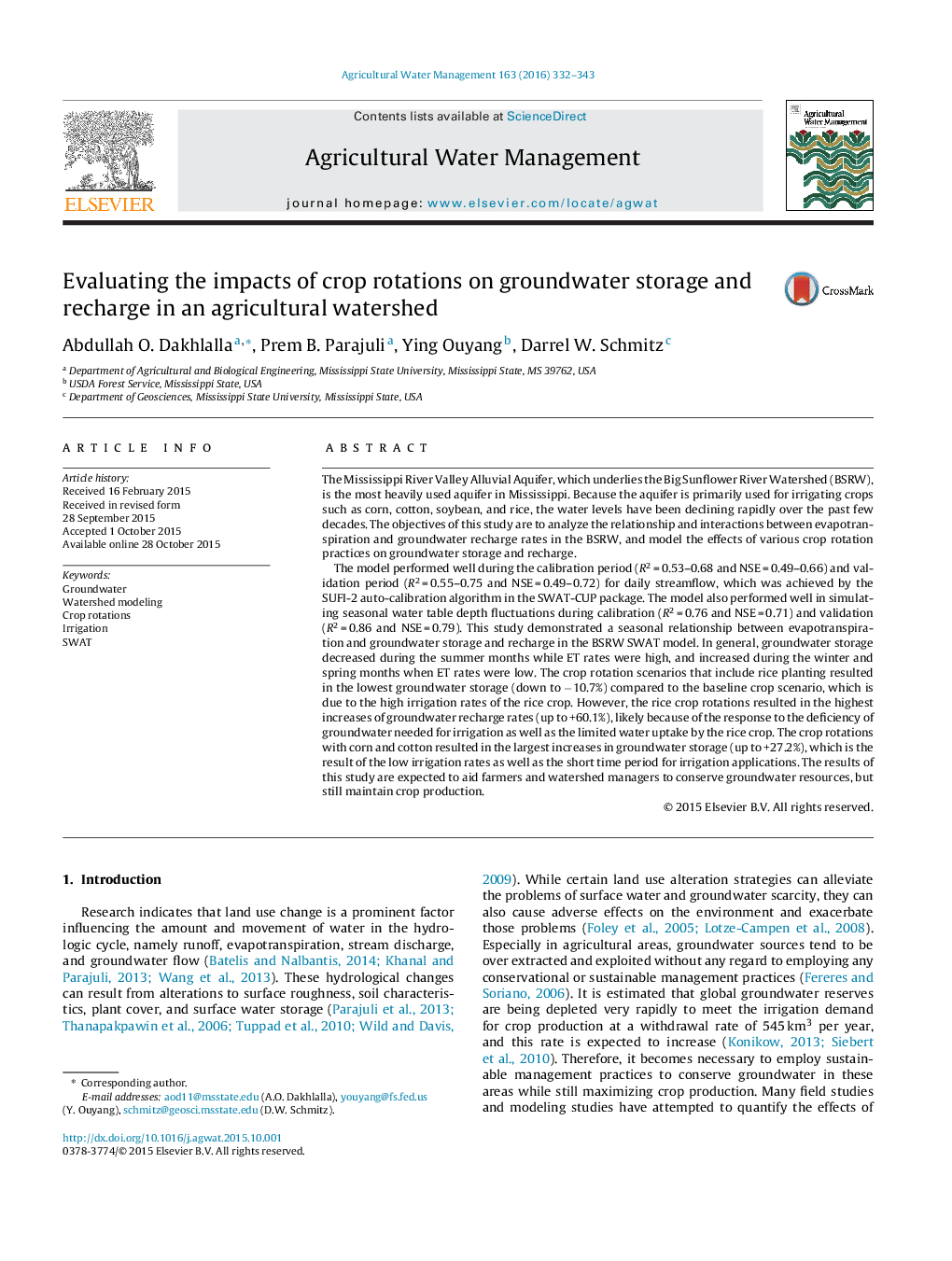| کد مقاله | کد نشریه | سال انتشار | مقاله انگلیسی | نسخه تمام متن |
|---|---|---|---|---|
| 4478362 | 1622916 | 2016 | 12 صفحه PDF | دانلود رایگان |
• Watershed model was calibrated for streamflow and water table changes.
• Determined relationship between ET and groundwater flow in SWAT model.
• Rice crop rotations resulted in the lowest groundwater storage.
• Crop rotations with corn and cotton resulted in highest groundwater storage.
The Mississippi River Valley Alluvial Aquifer, which underlies the Big Sunflower River Watershed (BSRW), is the most heavily used aquifer in Mississippi. Because the aquifer is primarily used for irrigating crops such as corn, cotton, soybean, and rice, the water levels have been declining rapidly over the past few decades. The objectives of this study are to analyze the relationship and interactions between evapotranspiration and groundwater recharge rates in the BSRW, and model the effects of various crop rotation practices on groundwater storage and recharge.The model performed well during the calibration period (R2 = 0.53–0.68 and NSE = 0.49–0.66) and validation period (R2 = 0.55–0.75 and NSE = 0.49–0.72) for daily streamflow, which was achieved by the SUFI-2 auto-calibration algorithm in the SWAT-CUP package. The model also performed well in simulating seasonal water table depth fluctuations during calibration (R2 = 0.76 and NSE = 0.71) and validation (R2 = 0.86 and NSE = 0.79). This study demonstrated a seasonal relationship between evapotranspiration and groundwater storage and recharge in the BSRW SWAT model. In general, groundwater storage decreased during the summer months while ET rates were high, and increased during the winter and spring months when ET rates were low. The crop rotation scenarios that include rice planting resulted in the lowest groundwater storage (down to −10.7%) compared to the baseline crop scenario, which is due to the high irrigation rates of the rice crop. However, the rice crop rotations resulted in the highest increases of groundwater recharge rates (up to +60.1%), likely because of the response to the deficiency of groundwater needed for irrigation as well as the limited water uptake by the rice crop. The crop rotations with corn and cotton resulted in the largest increases in groundwater storage (up to +27.2%), which is the result of the low irrigation rates as well as the short time period for irrigation applications. The results of this study are expected to aid farmers and watershed managers to conserve groundwater resources, but still maintain crop production.
Journal: Agricultural Water Management - Volume 163, 1 January 2016, Pages 332–343
